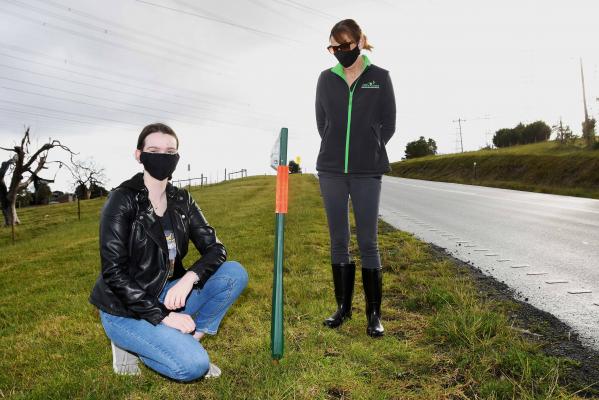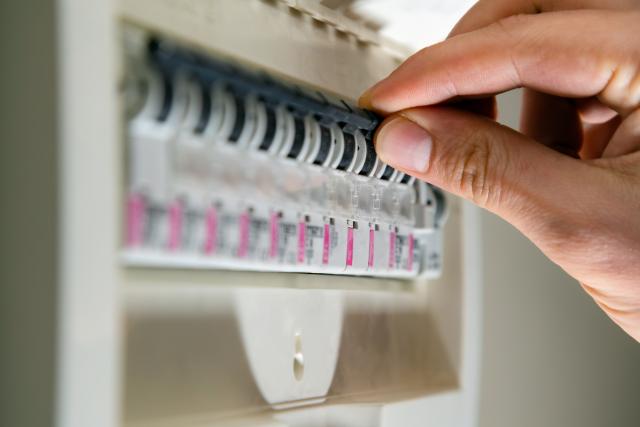Wildlife rescuer Sue Johnson says hi-tech ‘virtual fencing’ that was installed in Lysterfield South eight months ago has “dramatically reduced” the amount of kangaroos struck by vehicles.
Casey Council installed about 40 electronic bollards on both sides of Churchill Park Drive west of Parkside Boulevard towards the Churchill Park Golf Club boundary to protect wildlife following a petition from a young school student.The bollard technology, created by Wildlife Safety Solutions, are activated at night by approaching vehicles and emit a flashing light and sound to repel wildlife from approaching the road while the vehicle is in the area – effectively creating a virtual fence.
The initiative came about when then 12-year-old Shannon Tobin-Underwood of Lysterfield South started a petition, which garnered 111 signatures, to protect kangaroos from becoming roadkill on Churchill Park Drive, which was tabled at council.
Ms Johnson, who runs a local wildlife shelter, said in the seven months after the bollards were installed, she responded to 12 incidents whereby kangaroos had been hit by cars at Churchill Park Drive – compared to 79 the previous year.
But this year, she said there were no incidents of female kangaroos carrying joeys that had been struck.
“The virtual fence has dramatically reduced the amount kangaroos hit by vehicles in the 1km strip on Churchill Park drive,” she said.
“We knew it would help but this is just outstanding.”
Mr Johnson added while Casey Council was doing everything it could to protect kangaroos she was saddened to learn that 28 kangaroos would be culled in Lilydale “because they will not allow us to relocate”.
Shannon, now 13, said it was “very gratifying” to hear the number of wildlife injuries and deaths had reduced since the installation of the bollards.
“My original goal to help protect local wildlife was to have the speed limit along Churchill Park drive reduced. Although that was not approved, when Casey Council agreed to install the virtual wall bollards, I knew it was a positive step in the right direction,” she said.
“Our hope is now to have more installed in other high risk areas along Churchill Park drive, to create an even safer environment for endangered wildlife.
“In the end, I couldn’t be prouder that something I started three years ago has had such a positive, ongoing impact for our local wildlife.”







